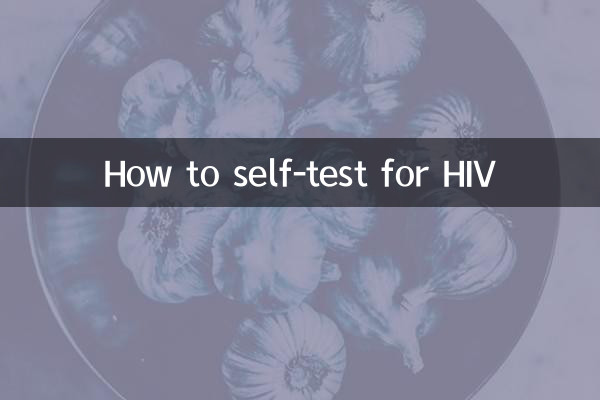How to self-test for HIV?
AIDS is a chronic infectious disease caused by the human immunodeficiency virus (HIV). Early detection and treatment are crucial to controlling the disease. With the advancement of medical technology, self-testing for HIV has become possible. This article will introduce the methods, precautions and recent hot topics of self-testing for HIV to help everyone respond scientifically.
1. Methods of self-testing for AIDS

Currently, HIV self-testing is mainly done through rapid testing kits. Common methods include:
| Detection method | Test sample | Detection time | Accuracy |
|---|---|---|---|
| blood test | Fingertip blood | 15-20 minutes | about 99% |
| saliva test | Oral mucosal exudate | 20-30 minutes | about 95% |
| urine test | urine | 30 minutes | about 90% |
2. Self-test steps
1.Buy regular test kits: Choose state-approved self-test products to ensure reliable quality.
2.sampling: Collect samples (blood, saliva, or urine) according to instructions.
3.Detection:Put the sample into the testing device and wait for the results.
4.Interpretation of results: For positive results, you need to go to the hospital for retest as soon as possible; for negative results, it is recommended to retest after 3 months.
3. Precautions
1.Window period impact: HIV infection takes 2-12 weeks to be detected, and it is recommended to retest 3 months after high-risk behavior.
2.operating instructions: Strictly follow the instructions to avoid contamination or misjudgment.
3.psychological support: If the result is positive, seek professional medical help promptly to avoid excessive panic.
4. Recent hot topics
The following are the HIV/AIDS-related hot spots that have attracted the attention of the entire Internet in the past 10 days:
| topic | heat index | Main content |
|---|---|---|
| Popularization of HIV self-testing kits | ★★★★★ | Many countries promote home self-testing and lower the testing threshold |
| New long-acting HIV drug | ★★★★☆ | Monthly injections replace daily pills, clinical trial progresses |
| AIDS prevention and treatment publicity | ★★★☆☆ | Public welfare organizations call for elimination of discrimination and strengthening education |
5. Summary
Self-testing for HIV is an important means of early detection of HIV infection, but it needs to be combined with professional medical confirmation. Treat test results scientifically, and proactive prevention and treatment are key. Recently, HIV self-testing technology and drug research and development have made significant progress, providing new directions for global prevention and control. If you have any questions, please consult a medical institution in time.
(Note: The data in this article are for reference only. Please follow the doctor’s guidance for specific testing and treatment.)

check the details

check the details